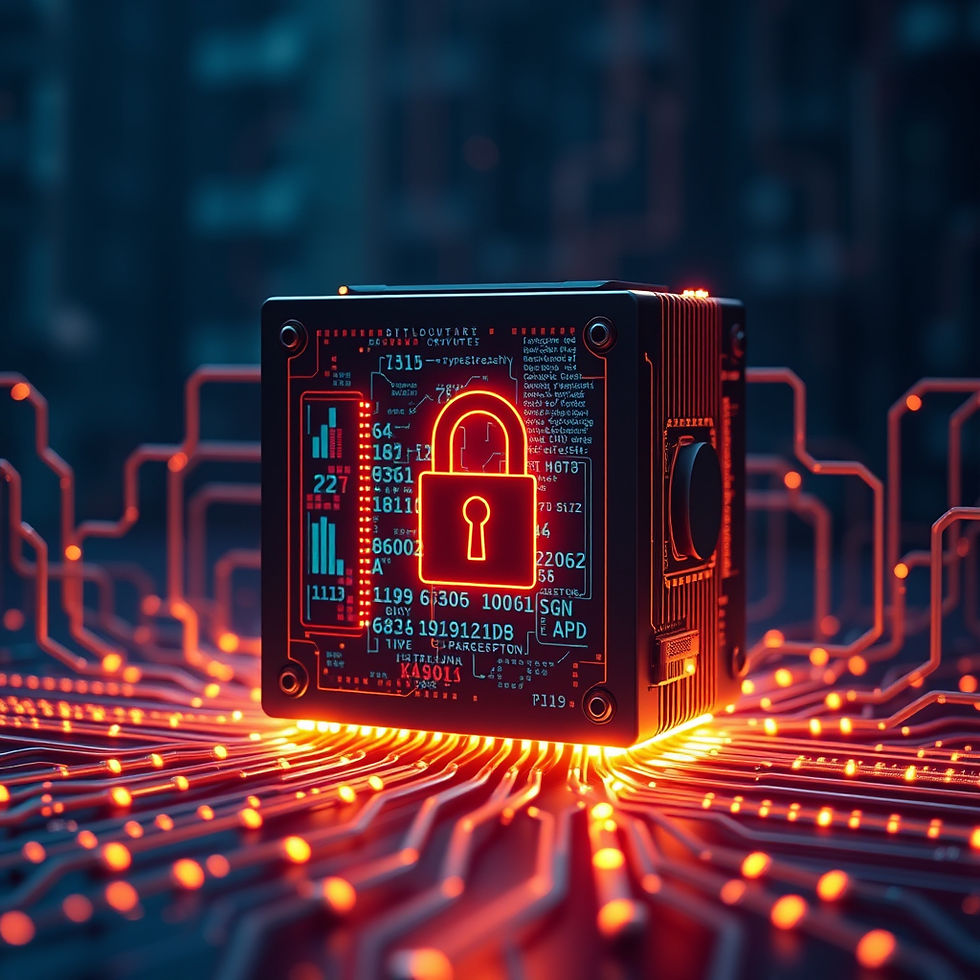Preparing for the Post-Quantum Era and Cryptography 2025
- Oludare Ogunlana
- Nov 1
- 3 min read

Introduction
The cybersecurity landscape is approaching a historic inflection point. Advances in quantum computing threaten to break the cryptographic foundations that safeguard global communications, financial systems, and digital identities. As early as 2025, experts predict that quantum-capable adversaries could begin stockpiling encrypted data to decrypt later. The transition to post-quantum cryptography (PQC) is therefore not optional; it is an urgent imperative.
The Quantum Threat
Quantum computing’s potential lies in its ability to perform complex calculations far faster than classical computers. Algorithms such as Shor’s and Grover’s can undermine public-key encryption systems like RSA, ECC, and Diffie-Hellman, which have been the cornerstones of internet security for decades. A sufficiently powerful quantum computer could, in theory, decrypt any communication protected by these methods.
IBM and Google have both achieved quantum milestones that bring this future closer. IBM’s roadmap anticipates scalable quantum systems by 2029, while the U.S. National Institute of Standards and Technology (NIST) is finalizing PQC standards to safeguard against these threats. The shift to quantum-resistant encryption requires foresight, investment, and leadership.
Cryptographic Agility: The Key to Survival
Organizations must adopt cryptographic agility, the capability to swiftly transition to new algorithms without major architectural changes. This flexibility allows enterprises to replace compromised algorithms as new standards emerge. IBM’s 2025 Cybersecurity Outlook emphasizes agility as the foundation for resilience in the post-quantum world.
In addition, enterprises must classify all data assets based on longevity and sensitivity. Information that must remain confidential for ten or more years, such as national security data, intellectual property, or financial transactions, should be prioritized for PQC adoption today. The World Economic Forum’s Global Cybersecurity Outlook 2025 warns that “data harvested today may be decrypted tomorrow.”
The Emerging Standards Landscape
NIST has selected several leading PQC algorithms, including CRYSTALS-Kyber for encryption and key establishment, and CRYSTALS-Dilithium, Falcon, and SPHINCS+ for digital signatures. These algorithms resist known quantum attacks and are expected to be officially standardized by 2025. Governments and enterprises must now begin integrating them into secure communications, VPNs, IoT devices, and identity systems.
Several nations are also issuing post-quantum mandates. The U.S. Cybersecurity and Infrastructure Security Agency (CISA) urges federal agencies to begin PQC migration planning. The European Union’s Cyber Resilience Act highlights encryption modernization as a strategic priority, while Canada’s Centre for Cyber Security has released practical guidelines for hybrid encryption adoption.
Operational Challenges in Transition
The migration to PQC is not merely a technical exercise. It requires:
Comprehensive Cryptographic Inventory – Identifying all systems that rely on vulnerable algorithms.
Vendor and Supply Chain Alignment – Ensuring partners, vendors, and cloud providers adopt compatible standards.
Hybrid Implementation – Deploying dual classical-quantum algorithms to maintain backward compatibility.
Performance Testing – Validating system efficiency under new encryption loads.
Regulatory Coordination – Aligning compliance with NIST, ISO/IEC 23837, and regional data protection laws.
Organizations that fail to act now may face operational disruption and regulatory penalties once PQC standards become mandatory.
Quantum-Safe Roadmap: OGUN’s Strategic Framework
OGUN Security Research and Strategic Consulting LLC recommends a structured roadmap for quantum readiness:
Assessment – Conduct an enterprise-wide quantum risk assessment to identify vulnerable assets.
Policy Development – Integrate PQC objectives into the organization’s cybersecurity strategy.
Pilot Implementation – Test PQC algorithms in controlled environments.
Training and Awareness – Build internal expertise on cryptographic modernization.
Continuous Review – Monitor emerging research and NIST updates for algorithm improvements.
This roadmap ensures a proactive and smooth transition without compromising operational resilience.
The OGUN Perspective
At OGUN Security Research and Strategic Consulting LLC, we view quantum preparedness as a matter of national and organizational resilience. Our consultants assist clients in developing crypto-agility strategies, assessing key management systems, and ensuring compliance with international PQC standards. We bridge the gap between innovation and security, enabling institutions to protect their digital assets in an era of unprecedented computational power.
Conclusion
The post-quantum era is no longer theoretical. The cryptographic methods that once guaranteed security are nearing obsolescence. Forward-thinking organizations are not waiting for disruption; they are preparing for it now. By adopting cryptographic agility, aligning with NIST standards, and investing in quantum-safe solutions, enterprises can safeguard their future in a rapidly evolving digital landscape.
------
Dr. Sunday Oludare Ogunlana, Founder and Principal of OGUN Security Research and Strategic Consulting LLC, is a cybersecurity scholar and AI governance professional dedicated to advancing secure innovation and post-quantum resilience. His work focuses on helping organizations navigate the intersection of emerging technology, regulation, and digital trust.



Comments